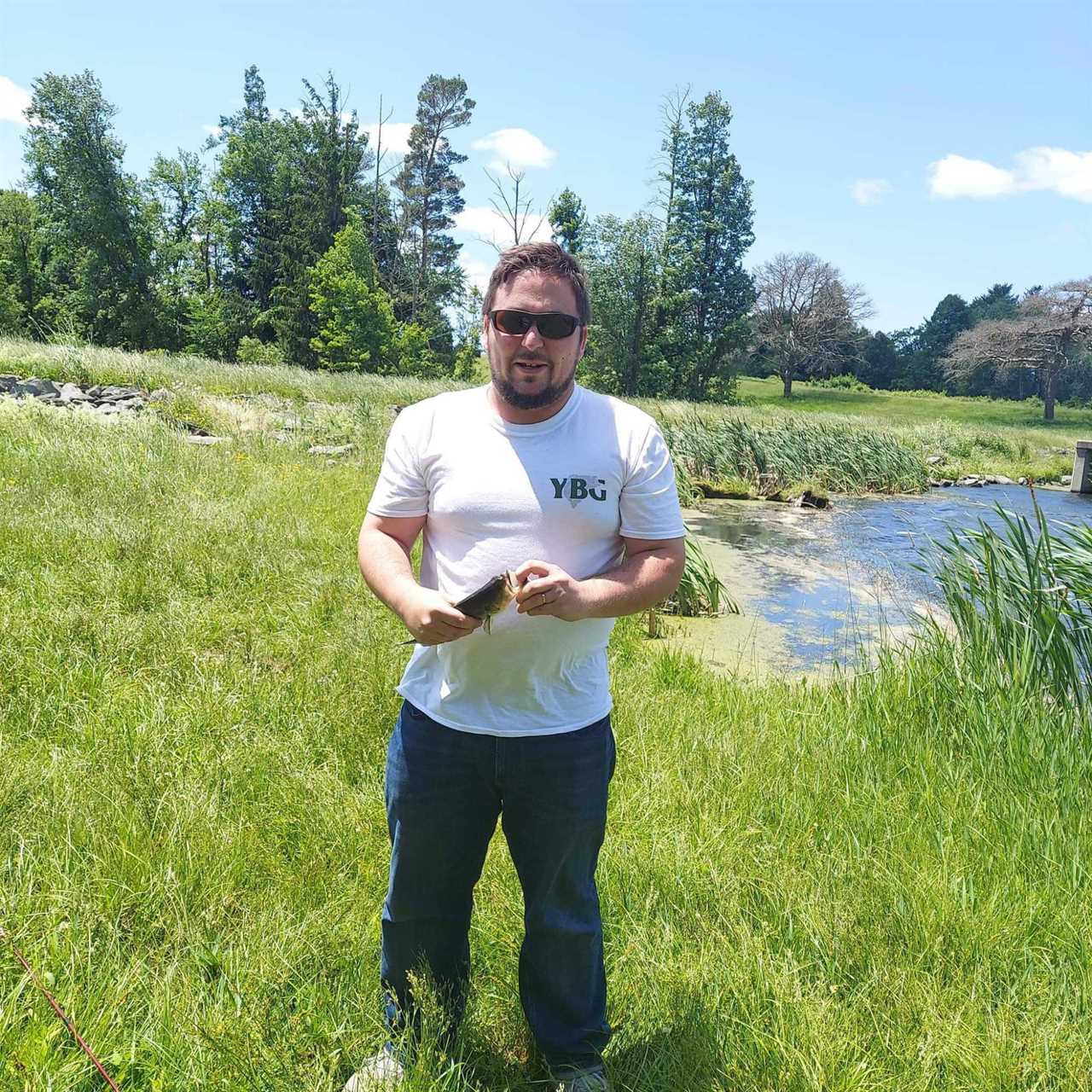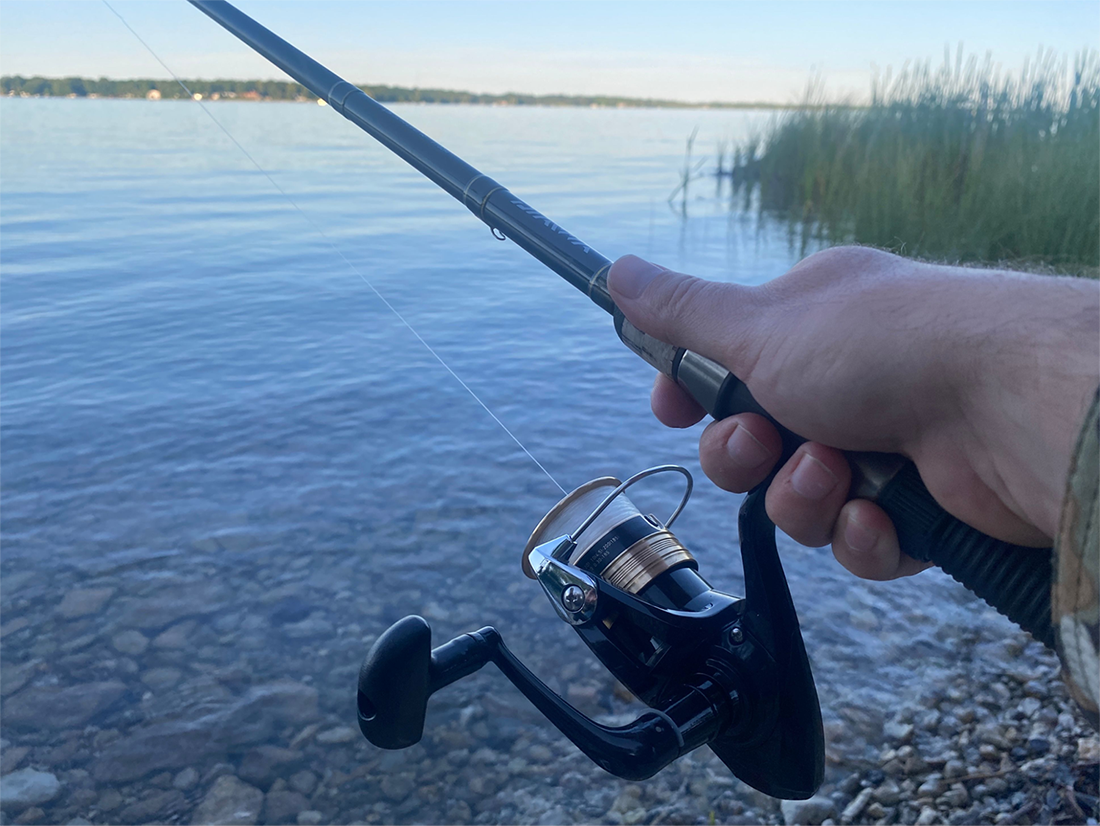No boat? No problem. Shore angling is great and it’s something I’ve done for a number of years. When I recently moved, I had to sell my boat, so it forced me to get a little more creative about where I fish and whether or not I can actually cast from the shore.
In many cases, this is how we all got our start. We went out to the lake with a parent or grandparent and they showed us how to fish. It all happened from the shore and I’ve had some incredible experiences standing on land so I want you to know that you don’t need to buy a boat to catch big bass.
Learning how to bass fish from shore will help you increase your chances of pulling in a lunker.
8 Best Shore Fishing Tips
Here are my best tips for catching bass from the bank:
1. Cast Parallel
One of the best things about fishing from the shore is the fact that it’s so much easier to place your bait where you actually want it to go. That’s the funny thing about shore fishing. People with boats will always make it sound like you’re not a real angler if you don’t have one.
Yet, they’re trying to cast exactly where I will if I’m standing on the shore.
Backside fishing and parallel fishing are two techniques you’ll want to learn. Backside fishing refers to casting on the backside of cover and working your lure back towards the shore. This could be a fallen tree, a stump, a rock or whatever.
Pair this by casting parallel to the shore. If you have waders or tall boots, you’ll have an easier time making this happen.
2. Walk The Shore
Take a look at Google Images, Google Maps or whatever you need to do to get an idea of what the shoreline looks like if you’ve never hit a lake before. This issue is about the only limitation you’ll face when it comes to bank fishing. You need to make sure you can actually access the water from somewhere.
I’ve been to plenty of lakes where it’s a boat launch and the entire shoreline is covered by 25 feet of dense trees and brush in all directions.
In some cases, you can use sites like Fishbrain and forums like Reddit to learn more about lakes and ponds without having to actually go there. These sites will give you some insight on what the shore looks like and if anyone is catching anything there.
If all else fails, take a chance. Head out and walk the shore yourself to see what you’re dealing with. The worst case scenario is you may get scratched up by some branches or a little wet but at least you’ll be able to toss out your line.
3. Quiet Down
My grandfather used to tell me to quiet down when we were fishing because it would scare the fish away. Looking back, I think he just wanted me to be quiet.
Nonetheless, there is a little truth to this. Fish are more prone to feel vibrations, so if you’re jumping up and down on the shore or splashing in the water, they will hear it and it will scare them away.
This is another area where fishing the shore is actually an advantage. If there are boats on the water, they’re driving the fish away from themselves and pushing them to you. As long as you’re careful and don’t do anything ridiculous, you have the advantage now.

The author after a catch.
4. Size Down
While this isn’t always the case, it’s a good policy. Decrease the size of your lure a little when fishing from the shore because you want to match whatever the bass are chasing in that area.
Since you’re trolling the shore, chances are they’re hunting baitfish that are a bit smaller since they’re hiding around in the shallow water.
I’d recommend using a 4-5-inch Senko or a whopper plopper when targeting shoreline bass during warm weather. The whopper plopper makes a lot of noise and generates a ton of attention which can pull the larger bass out of the weeds.
5. Go Into The Weeds
We usually try to avoid excessively weedy waters because we’re afraid of getting hung up and losing our lures, but when you’re fishing from the shore for bass, you want to do the opposite.
Go towards the weediest spots on the lake because this is where the bass are hiding. They use the vegetation as cover and it’s typically where the larger bass will be.
The trick is to use weedless presentations when casting into heavy vegetation. Texas rigged worms, weedless frogs, and Carolina rigs are all options you can use when fishing dense cover.
6. Don’t Overpack
If you don’t have a boat, you’re going to have to carry everything around yourself and this can sometimes take you into some sketchy locations.
I don’t usually stay in one spot longer than 30 minutes if I don’t feel any nibbles, so you can imagine it’ll get tiring if you’ve brought an entire cooler, multiple rods, and every lure you’ve ever owned.
Pick up a smaller tackle box or bait tray and put whatever you intend on using that day in there. Bring everything else in a small backpack and consider getting a portable fold-up chair if you have to sit down.
When choosing lures, make sure to bring a versatile variety of options that all present differently. Bring a worm, a topwater, something noisy, and something bright like a spoon.

Fishing from the bank.
7. Best Lures for Shore Fishing
I’ve talked about this a little, but I want to elaborate on the best lures for shore fishing. These are the best options because they’re weedless (or almost weedless), fast, and obnoxious.
The goal of shore fishing is to pull the larger bass out of their hiding spot and to do that, you need to entice them.
Texas-Rigged Worms – These are not the most exciting lures out there but they work and they’re weedless. Take a Senko worm, rig it Texas style by running the hook through the top of the worm and turn it around so the barb is inside the worm and covered.
Tube Jig – Tube jigs are another great option but they’ll only work if you have a bit of clearance. They get hung up easily so you’ll want to hop them aggressively on the bottom with a ⅛ ounce weight.
Topwater Poppers – I talked about the whopper plopper before and along with the hula popper, these are two of the best lures for shore fishing. They make a loud sound when they hit the water and they gurgle as you retrieve them. Plus, they work on the top of the water so they’re not as prone to pulling back a ton of weeds.
8. Where to Fish on the Shore
So, you get to the lake and you’re not sure where to go. First of all, you want to make sure you’re actually allowed to fish there.
If it’s a private lake, you’ll need to obtain permission, which isn’t always easy. If it’s a public lake or state park, there could be areas of the lake that are off limits to fishing. You’ll want to look for a DCNR board that could alert you to this information.
If you don’t see anything clearly marking an area for conservation, go ahead and cast there. Make sure you have your fishing license and if a Park Ranger does approach you, simply apologize and tell them you didn’t know because it’s not marked.
Frequently Asked Questions
Here are some of the most frequently asked questions I get about bass fishing from the shore:
What attracts shore bass the most?
You want to mimic whatever the bass are after, which usually depends on the season. For example, during the spawn in Spring, bass tend to feed on crawfish so using lures that would mimic these would be the best strategy.
What is the best time to fish from shore?
The best time to fish from the shore is about the same as any other location. You’ll want to get there early in the morning or late before it gets dark. This is especially true in the summer because the water temperature is hot and bass will quickly leave the shallow early because that water will get warm first.
Bank on It
Knowing how to bass fish from shore will leave you with no excuse for why you haven’t gone fishing yet. Don’t think that you can’t catch anything from the shore because I am living proof that shore angling works if you know how to work it.
Get your rod and reel, choose a lake near you, and get out there. Good luck!
The post Catching Bass From the Bank: 8 Practical Pointers for Fishing From Shore appeared first on Good Sam Camping Blog.
By: Coty Perry
Title: Catching Bass From the Bank: 8 Practical Pointers for Fishing From Shore
Sourced From: blog.goodsam.com/bass-fishing-from-shore
Published Date: Wed, 10 Aug 2022 21:00:00 +0000
---------------------------------------------
Did you miss our previous article...
https://outdoorsnewswire.com/camping/how-to-live-in-an-rv-fulltime-to-save-on-city-living
 CampingSurvivalistHuntingFishingExploringHikingPrivacy PolicyTerms And Conditions
CampingSurvivalistHuntingFishingExploringHikingPrivacy PolicyTerms And Conditions
